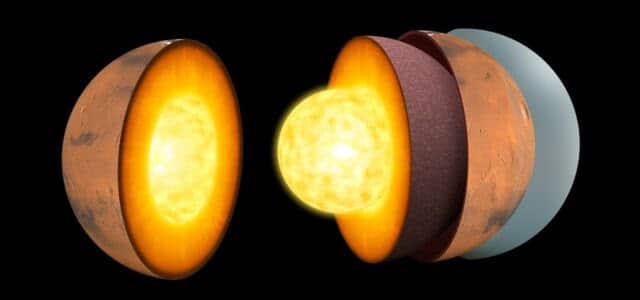
NASA’s collaboration with a British university on the InSight mission has enabled seismic data to be collected on Mars and the composition of the planet’s core to be precisely determined.
The InSight mission, which ended in December 2022, carried two special instruments: a seismometer and an instrument for measuring heat fluxes from the planet’s core. After four years of data recording, an international team of scientists led by the University of Bristol in England was able to determine the composition of Mars’ core, which should provide a better understanding of the planet’s history and evolution.
The technique used revealed the presence of an iron-based liquid alloy, as well as a certain amount of sulfur and oxygen in the composition of the planet’s core. A similar technique enabled British geologist Richard Dixon Oldham to discover the composition of the Earth’s core over a century ago. The method used makes it possible to define the nature of materials by studying the way seismic waves propagate through the materials they pass through.
The InSight probe has thus been able to record hundreds of earthquakes on Mars to build up its database. Unlike the Earth, whose core is made up of a liquid outer core and a more solid inner core, itself containing a denser core, Mars core is entirely liquid and contains lighter elements. Of these, 1/5 are sulfur, followed by relatively small quantities of carbon, oxygen and hydrogen.
The composition of this core, which is less dense and more compressible than Earth’s, could explain why Mars has no magnetic field, although this link has yet to be confirmed with certainty. Improved knowledge of Mars’ specific characteristics in the years to come should help us to better pinpoint the types of environment that could harbor life, and better target the search for life forms outside the solar system.




